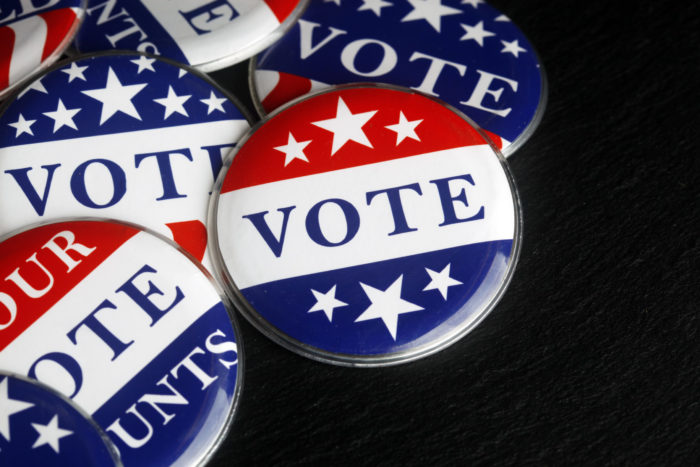Election 2020: What Are the States to Watch on Election Night?
Date: October 29, 2020

With less than a week until Election Day, both campaigns are making their final appeals to voters across the country, especially in swing states. Using data from the 2010-2018 American Community Surveys (ACS) and the 2008-2018 Current Population Surveys (CPS), we looked at where the electorate has changed the most.
We looked at where the increase in voter registration, specifically among certain voters, over the last four years outpaces Donald Trump’s margin of victory in 2016. These groups include non-Hispanic college-educated whites, African Americans, Asian Americans, Hispanic Americans, Native Americans, or multiracial voters. While an estimate of registered voters may not forecast the outcome of an election, the demographic and socioeconomic trends borne out by the data show why these states — Florida, Michigan, Arizona, Georgia, North Carolina, Texas, Pennsylvania, and Wisconsin — are the states to watch as we head towards next week.
- There are 8 states where the increase in the number of college-educated whites and minority registered voters since 2016 is greater than Donald Trump’s 2016 margin of victory. That includes some of the most competitive swing states this year, like Georgia (where the increase in registered voters is about 180,000 more than Trump’s margin of victory), North Carolina (156,670), Pennsylvania (130,804), and Wisconsin (68,978).
- Since 2016, in addition to the increase in college-educated and minority voters, there has been a decrease in non-college-educated white registered voters. That means the gap between new registered voters and Trump’s margin of victory is even greater. In Georgia, that number is 243,050, and in Pennsylvania it is 289,604.
- In 3 states, the increase in the number of new registered Hispanic voters alone is estimated to be more than Trump’s margin of victory in 2016. In Florida, there are 234,714 more new Hispanic registered voters than the 2016 margin of victory. In Arizona, there are 32,664 more, and in Michigan, 9,884 more.
In 5 states, the change in the number of college-educated non-Hispanic white registered voters alone was larger than the margin of victory in 2016. That includes Florida, where there are 180,000 more new college-educated white registered voters than the state’s margin of victory in 2016. In other states, like Michigan (152,191), Pennsylvania (49,036), Wisconsin (34,156), and North Carolina (1,030), we see the same pattern.
Table 1: States with Increases in College-Educated and Minority Registered Voters Larger than 2016 Margin of Victory
| State | Change in College-Educated and Minority Voters | Change in White Voters with No College Degree | Margin of Victory, 2016 | Difference in Change in College-Educated and Minority Voters and Margin of Victory | Difference Including the Change in White Voters with No College Degree |
| Florida | +950,966 | -117,327 | 112,911 | 720,728 | 838,055 |
| Michigan | +292,610 | -74,784 | 10,704 | 207,123 | 281,906 |
| Arizona | +253,631 | +22,849 | 91,234 | 185,246 | 162,397 |
| Georgia | +454,191 | -62,719 | 211,141 | 180,330 | 243,050 |
| North Carolina | +356,938 | -26,954 | 173,315 | 156,670 | 183,623 |
| Texas | +1,123,509 | -174,634 | 807,179 | 141,696 | 316,330 |
| Pennsylvania | +333,888 | -158,799 | 44,284 | 130,804 | 289,604 |
| Wisconsin | +117,894 | -26,168 | 22,748 | 68,978 | 95,146 |
Table 2: States with Increases in Hispanic Registered Voters Greater than the 2016 Margin of Victory
| State | Change in Hispanic Voters | Margin of Victory 2016 | Difference Between Increase and Margin of Victory |
| Florida | +347,625 | 112,911 | 234,714 |
| Michigan | +20,588 | 10,704 | 9,884 |
| Arizona | +123,898 | 91,234 | 32,664 |
Table 3: States with Increases in White College-Educated Registered Voters Greater than the 2016 Margin of Victory
| State | Increase in White College-Educated Voters | Margin of Victory 2016 | Difference Between Increase and Margin of Victory |
| Florida | +293,358 | 112,911 | 180,447 |
| Michigan | +162,895 | 10,704 | 152,191 |
| Pennsylvania | +93,320 | 44,284 | 49,036 |
| Wisconsin | +56,904 | 22,748 | 34,156 |
| North Carolina | +174,345 | 173,315 | 1,030 |






